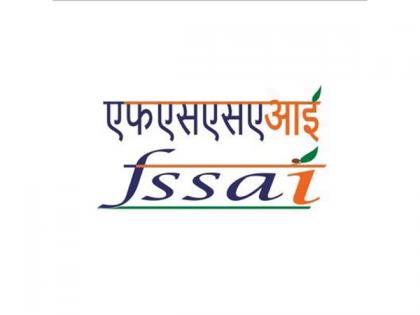Reports claiming high pesticide residue on Indian herbs, spices "false and malicious": FSSAI
By ANI | Published: May 5, 2024 12:47 PM2024-05-05T12:47:31+5:302024-05-05T12:50:03+5:30
New Delhi [India], May 5 : The Food Safety and Standards Authority of India (FSSAI) refuted media reports claiming ...

Reports claiming high pesticide residue on Indian herbs, spices "false and malicious": FSSAI
New Delhi [India], May 5 : The Food Safety and Standards Authority of India (FSSAI) refuted media reports claiming that it allowed higher pesticide residues in herbs and spices.
Terming the reports "false and malicious", the food safety regulator, through a press note, asserted that India has one of the most stringent standards of Maximum Residue Limits (MRLs) in the world and MRLs of pesticides are fixed differently for different food commodities based on their risk assessments.
In India, pesticides are regulated by the Ministry of Agriculture and Farmers Welfare (MoA and FW) through Central Insecticide Board and Registration Committee (CIB and RC) constituted under Insecticide Act,1968.
The CIB and RC regulate the manufacturing, import, transport, storage of pesticides and accordingly the Pesticides are registered/banned/restricted.
The Scientific Panel on Pesticides Residues of Food Safety and Standards Authority of India (FSSAI) examines the data received through CIB and RC and recommends the MRLs after performing risk assessment considering the dietary consumption of Indian population and health concerns in respect of all age groups, FSSAI said.
Total pesticides registered by CIB and RC in India are more than 295 out of which 139 pesticides are registered for use in spices. Codex has adopted total 243 pesticides out of which 75 pesticides are applicable for spices.
A pesticide is registered on many food commodities with different MRLs based on risk assessment data. For instance, the use of Monocrotophos is allowed on many crops with different MRLs such as Rice at 0.03 mg/kg, Citrus fruits at 0.2 mg/kg, Coffee beans at 0.1 mg/kg and Cardamom 0.5 mg/kg, Chilli at 0.2 mg/kg.
The MRL of 0.01 mg/kg was applicable in case of pesticides for which MRLs have not been fixed. This limit was increased to 0.1 mg/kg only in cases of spices and is applicable only for those pesticides which are not registered in India by CIB and RC.
One pesticide/insecticide is used in more than 10 crops with different MRLs. For example, Flubendiamide is used in Brinjal with an MRL of 0.1 whereas for Bengal Gram the MRL is 1.0 mg/kg, for Cabbage 4 mg/kg, for Tomato 2 mg/kg and for Tea it is 50 mg/kg. Similarly, Monocrotophos used for food grains with MRLs at 0.03 mg/kg, for citrus fruits 0.2 mg/kg, for dried chilli it is 2 mg/kg and for Cardamom 0.5 mg/kg.
"The MRLs are dynamic in nature and regularly revised based on the scientific data. This practice is aligned with global standards and ensures that MRL revisions are made on a scientifically valid basis, reflecting the latest findings and international norms," FSSAI said.
Disclaimer: This post has been auto-published from an agency feed without any modifications to the text and has not been reviewed by an editor
Open in app